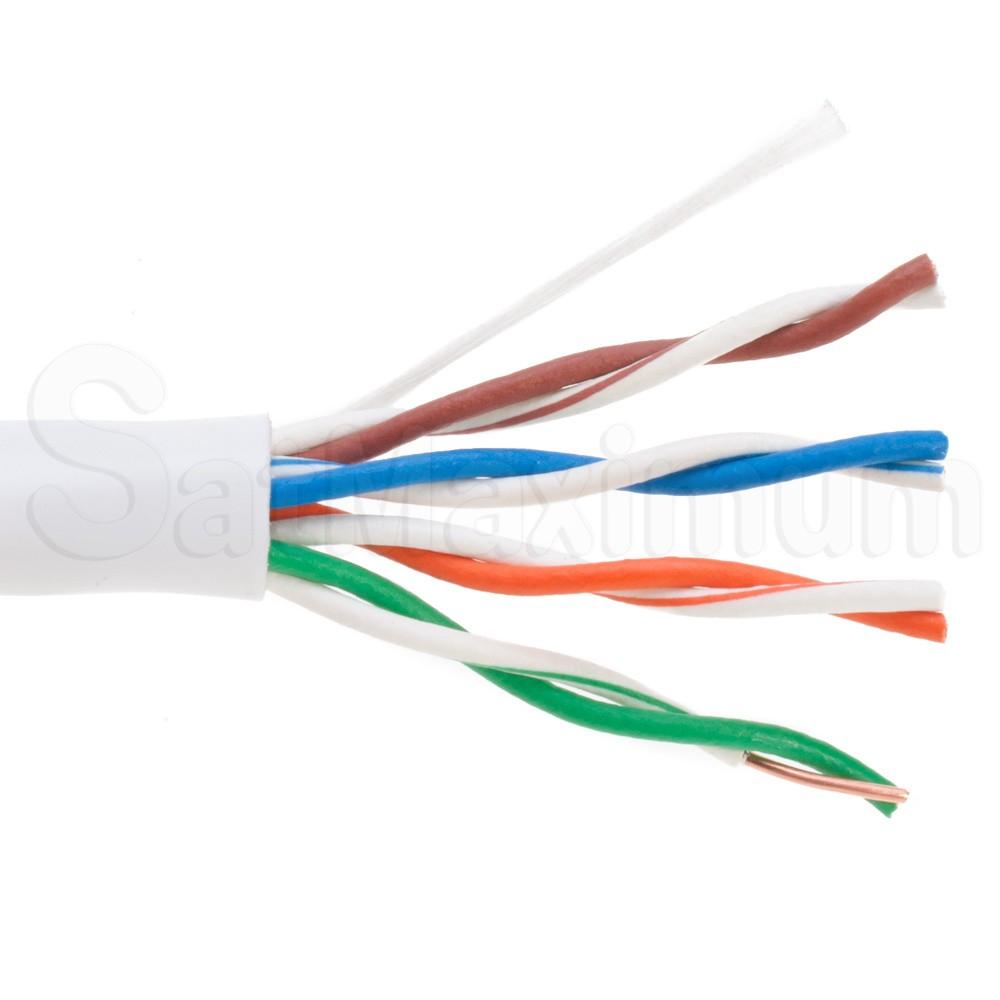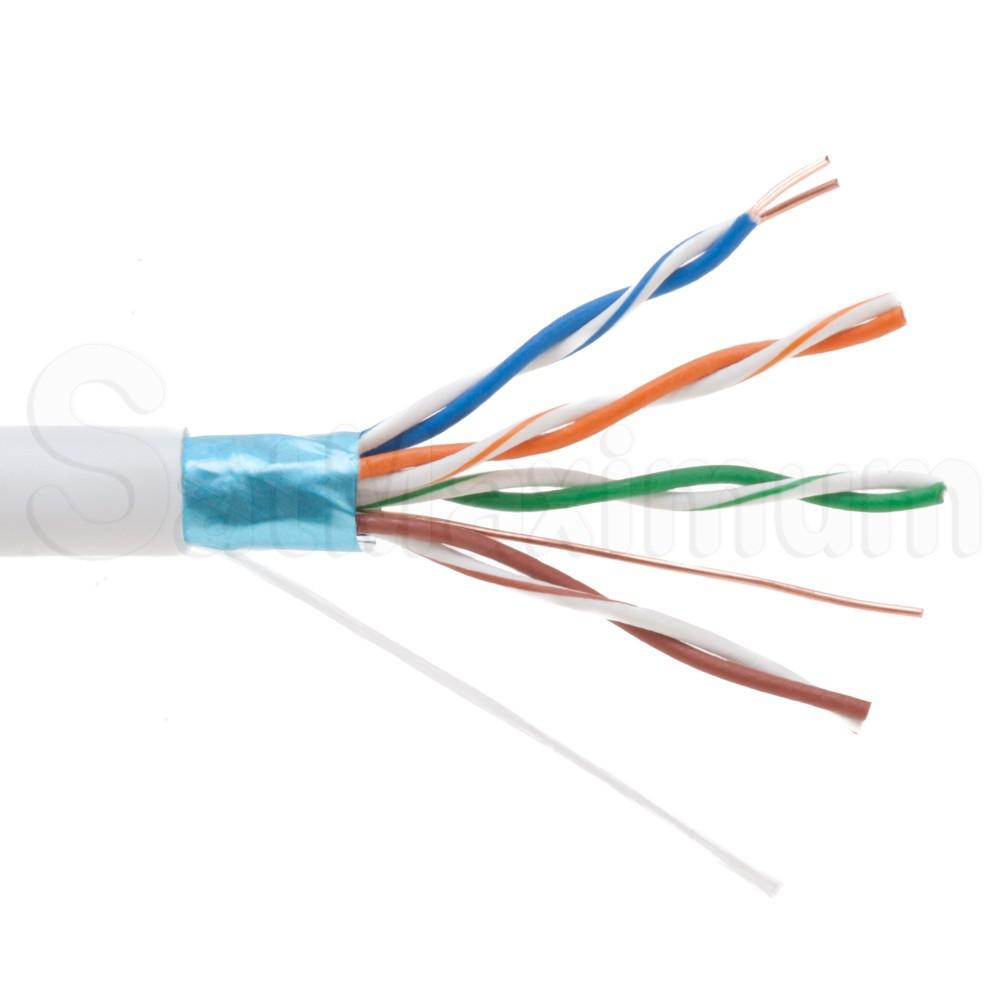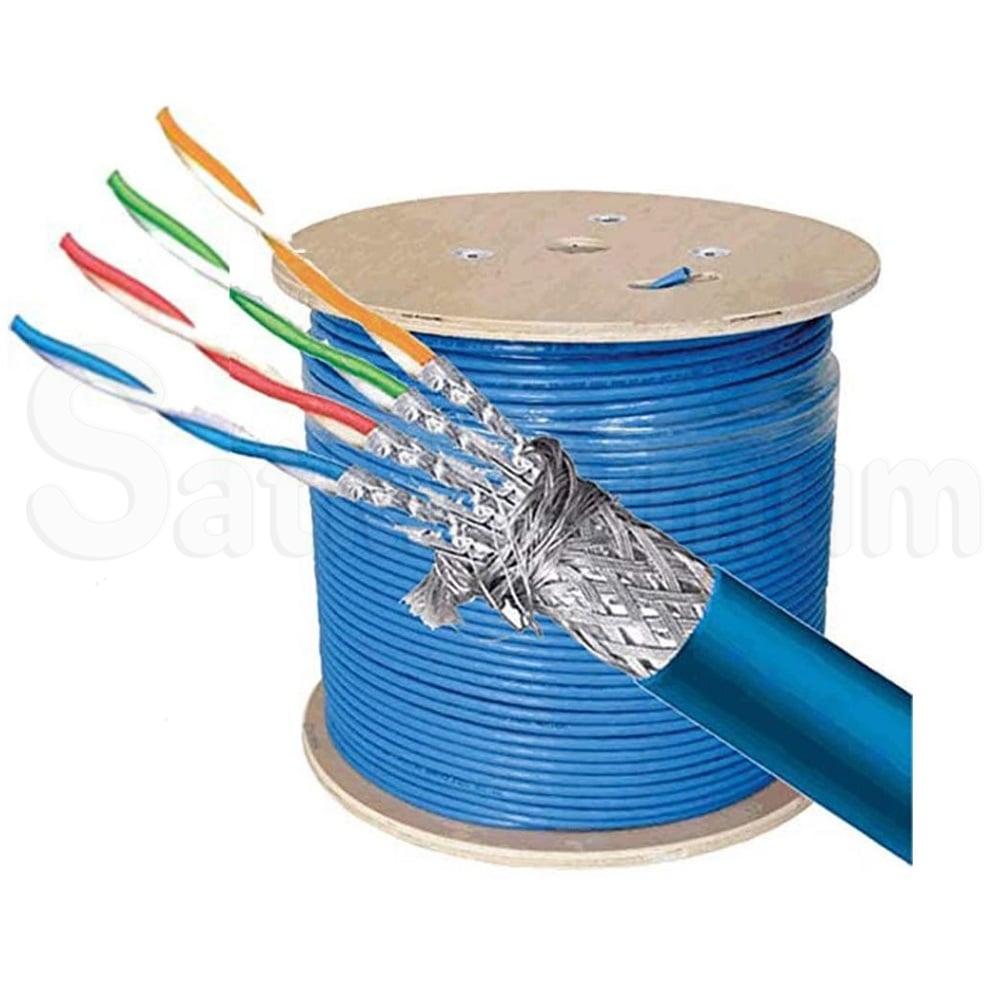FTP vs UTP : Shielded vs Unshielded Ethernet cables
In today’s day and age, Ethernet cables are an integral part of our evolving high-tech world. Knowing what type of cable to use for your application is key. Whether you’re looking for a Cat5, Cat6 or Cat6a cable, you will find that each type comes either Shielded (FTP) or Unshielded (UTP).
Depending on where the intended application is will make the difference in which one you choose. To help in the process, we will discuss the various characteristics between Shielded and Unshielded Ethernet cables.
Differences between FTP and UTP
Shielded Twisted Pair (FTP/STP)
FTP is a type of twisted pair called Foiled Twisted Pair, many installers refer to it as STP – Shielded Twisted Pair. This type of cable may have an outside layer or “shield’ of conductive material such as metal foil or braided copper mesh around all the wires; or shielding for each individual pair of wires; or both.
Shielded cables provide better performance as they can transmit data over longer distances at higher speeds than unshielded and are excellent for high-end width applications.This does not mean that shielded Ethernet Cable can go beyond 328 feet. When ambient temperatures rise above 68℉, permitted run lengths for any kind of Ethernet cable get shorter. But the effect is less severe upon shielded Ethernet cable.
Shielded cables also provide greater protection against electromagnetic interference (EMI). This protection helps with reliable data transfers, maintaining data integrity, and better video streams.
Although shielded cables offer you better performance, they are more expensive than unshielded cables. This is because of the combination of braiding and individual foil shielded twisted pairs. The cabling itself can also be thicker and heavier than unshielded cable. With its thicker more rigid cable it can make it harder to install, especially if you need to run it in tight spaces or around corners.
Additionally, the cost can increase due to the shielded hardware required at the ends of the cable to ensure your cable is fully EMI protected. Lastly, you might be required to install additional ground wires which is another added cost. All this can add up to be very expensive, especially when installing several shielded cables.
What are the Pros of Using FTP Cables:
· Provide enhanced protection against EMI because of the conductive materials used to wrap the wires inside the jacket.
· Provide better performance by ensuring data transfer throughout the entirety of the cable making it ideal for longer runs. This is especially vital in spaces with large volumes of electrical equipment that emit EMI such as; data centers, hospitals, airports, industrial settings, etc.
What are the Cons of Using FTP Cables:
· More expensive than UTP cables because the conductive materials in the shielding and connecting hardware.
· Shielding makes it more difficult to install due to the cable being thicker, heavier and more rigid.
The Different Types of Shielded Cables
Before we jump to the shielding types lets see what the standard shielding abbreviation means
- TP = Twisted Pair
- U =Unshielded
- F = Foil Shield
- S= Braided Shield
The list below shows commonly used shielding types:
- U/UTP or UTP unshielded twisted pair cable consists of four unshielded twisted pairs.
- F/UTP or FTP shielded cable consists of four unshielded twisted pairs encased in foil shield around the entire cable.
- S/UTP or STP shielded cable consists of either a braid, or screen around the entire cable with unshielded twisted pairs.
- SF/UTP or SFUTP shielded cable consists of a braided shield around a foil shield, with unshielded individual twisted pairs.
- F/FTP or FFTP shielded cable consists of an overall foil shield around the entire cable, with individually foil taped twisted pairs.
- S/FTP or SFTP shielded cable consists of a braided shield around the entire cable, and foil shielding around each twisted pair. This is the most common form of shielded cable because it provides nearly 100% protection while remaining strong and flexible. This additional foil shielding also helps reduce crosstalk between twisted pairs.
| UTP Cables | FTP Cables | SFTP Cables |
|---|---|---|
 |  |  |
Why Shielded Cables Are Necessary
When it comes to why shielded cables are necessary, that all depends on the protection you require from radio frequency interference (RFI), or electromagnetic interference (EMI). This is where it’s vital to know the difference between shielded vs unshielded cable.
Preventing Electromagnetic Interference (EMI)
Electromagnetic interference (EMI), also referred to as radio frequency interference (RFI) is any electronic interference produced from external sources such as; electrostatic coupling, electromagnetic radiation, or electrical circuit noise.
These EMI/RFI’s are happening all around us, all the time. Similar to the static sound you may here on a phone, this interference can also affect the networking system. Any strong EMI noise can interfere with data traffic flow and prevent computers from communicating with one another causing data to be lost.
This requires the network to resend the information again and when it has to be repeated several times your network will become sluggish. These EMI disturbances can lower performance of a circuit or cause it to work improperly.
Where to Use Shielded Cables
Shielded cables are designed to be used in locations where there is a high chance of electromagnetic interference (EMI) such as; radio stations and airports. These cables are also great to use for security systems as they protect from power frequency and radio frequency interference (RFI). The shielding helps keep noise from escaping the cable, therefore, reducing interferences in other devices.
We would recommend using shielded cables if you are concerned about your data on your network, or your network is around a lot of electronic devices, especially heavy machinery and air conditioning units.
Unshielded Twisted Pair (UTP)
Unshielded twisted pair cable (UTP) is less expensive, and a more popular type of cabling. This is because the cable is typically thinner and lighter, making it more flexible, a lot easier to install and it doesn’t require grounding.
Unshielded cable is constructed with each pair of wires twisted together. Those wires are then wrapped in tubing without any other shielding. Some unshielded cables have splines to help achieve the performance needed to carry data at higher speeds and to help with rigidity of the cable.
Although unshielded cables can provide some minor EMI protection, they cannot protect against strong EMI noise interferences such as power lines, electrical equipment and motors. These interferences can cause signal degradation and data loss or slow your network down.
What are the Pros of Using UTP Cable:
· Less expensive than STP cables.
· More flexible and easier to install because they are thinner and lighter.
· Do not require grounding and are compatible with most networking systems.
What are the Cons of Using UTP Cables:
· More vulnerable to electromagnetic interference (EMI) which can decrease performance.
Where to Use Unshielded Cables
Unshielded cable is mostly recommended for use in smaller offices or home networks where there isn’t a high concern for electromagnetic interference. Getting a higher standard unshielded cable such as solid copper core or one with a spline will offer you some protection against crosstalk. The spline will also give you rigidity in the cable.
Which Cable Should I Choose?
When it comes to shielded vs unshielded Ethernet cable (FTP vs UTP), both cables are used for different applications so it’s a good idea to assess the space before making a final decision. If your location has high EMI interference requirements, such as a large business office space, hospital, airport, industrial setting, etc. then you would probably benefit from installing FTP cables. But if you are installing cables in a smaller office building or your home than it is safe to use UTP cable.
For both cables whether shielded or unshielded, the tools used to terminate are largely the same. Run length distances are also the same for both cables. Shielded cable is not used to defeat normal length limitations. Also, both cable types perform the same basic function, which is the delivery of data signals and possible PoE (Power over Ethernet) from point A to point B.
As far as cost, FTP cables are not that much more than UTP on a small scale. But, if it’s a large project, then it may become rather expensive and you need to take that into consideration.














































